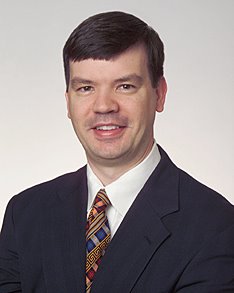
Tom Fiala, a fellow plastic surgeon, asks "Do you think American women will make the switch to the Allergan Style 410 implants? Or does the required larger incision size, and un-naturally firm texture overwhelm the advantages of the non-collapsing shape? I read about lower capsule rates in the literature - but is that because they're so darned hard to start with? "
My prediction - there will be tremendous promotion of the form stable devices (the Allergan 410 & the Mentor CPG)upon approval with a signifigant backlash after people attempt to use them in the wrong patients. These devices demand a "virgin" pocket of tissue for tissue adherence and will not be a great choice for reoperative patients with the large pockets that smooth,round implants require. You will see a lot of rotational problems present as people experiment with these implants. These anatomic shaped implants are also a poor choice for patients with significant ptosis (droop).
If Allergan & Mentor are smart, they should be manufacturing a line of round, form-stable devices for the American market which will be what we gravitate towards I bet. The stiffness of these devices is also going to take getting used to. There exists a slightly less stiff cohesive 410-style device in Europe which might be a better fit for American tastes.
Underdog implant manufacturer, Sientra (aka Silimed) has had one of the softer cohesive gel "tweeners" in their lineup (which is still in FDA trials) that feels like it hits the sweet spot just right. They've also got some really sharp management in former Inamed execs Hani Zeini and Dan Carlisle. I haven't seen any of their implant performance data, but it will be interesting to see if the outstanding Allergan 410/Mentor CPG numbers in re. to rupture and capsular contracture are maintained when you soften the implant slightly like Sientra.
Snafu Suz also asked for news about the form stable (gummy bear) devices.
The million dollar question now is, "When will Allergan's & Mentor's devices be available?". You could go broke betting on how the FDA moves on anything. However, the data is so overwhelming that these type of implants dramatically reduce complications that it seems approval is likely this spring. I've heard thru the grapevine that major inservice meetings for the device reps. have been scheduled within the next few months which I take to mean that the FDA has communicated to these companies their endorsement of their PMA applications. Rupture rates of almost 0% and capsular contracture rates 60-80% less then current devices in recent studies seemed to have been persuasive.
Dancing Bev left this comment on a post re. to fat-grafting lumpectomy defects using a proprietary system by Cytori (see here) of which I was pessimistic on it's practicality. She writes "I recently heard a presentation of them stating that the costs for the whole reconstruction procedure (doctor fee, equipment, medical personal, energy...) would not surpass 8000$ of which the stem cell product itself costs roughly $2000. "
$8000? I'd counter that on planet earth it unfortunately costs more then $8000 to take somebody to the hospital O.R. to put a cast on for 10 minutes, much less perform a procedure taking several hours with several thousand dollars worth of disposable goods as is outlined in the description of that type of fat grafting. I sat through 5 lectures on fat grafting and 2 live surgeries this past weekend and the costs for those procedures was apparently between $30,000-50,000.
Don't take that to mean I'm not interested in this, I just don't understand the economics of complex fat grafting setups. A number of Europeans are presenting fairly simple ways of fat harvest and grafting irradiated breast wounds that can be performed in less then 30 minutes under local in your office. I was so impressed that I just bought some simple equipment to start doing fat grafts on radiation induced breast wounds in my procedure room.
Rob






















